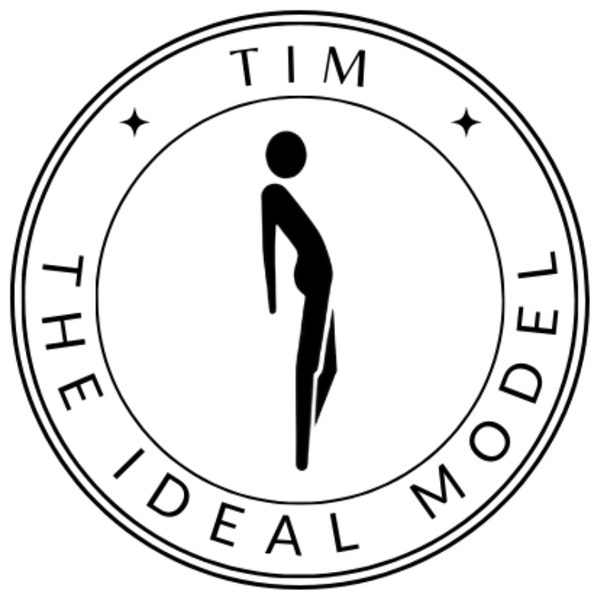Having been deeply immersed in the modeling industry for years, I've had the privilege of witnessing firsthand the unique challenges models encounter when it comes to managing their finances. No one told me anything about finances during my journey, and I quickly realized the importance of understanding this aspect of the industry. From the exhilarating highs of landing lucrative gigs to the unpredictable lows of navigating irregular income streams, the financial landscape for models can be as complex and dynamic as the industry itself.
One of the most daunting aspects of a model's financial journey is the necessity to budget effectively for various expenses. Whether it's investing in portfolio development, updating wardrobes, or covering travel costs for castings and photoshoots, these financial demands often require meticulous planning and resourcefulness. Learning to budget wisely ensures that every dollar is allocated thoughtfully, maximizing opportunities while minimizing unnecessary expenditures.
However, perhaps the most formidable hurdle that models face is the annual ritual of tax season. Amidst the hustle and bustle of castings, fittings, and editorial shoots, models must also contend with the intricate labyrinth of tax laws and regulations. Understanding tax obligations, identifying eligible deductions, and maintaining accurate records become paramount tasks in ensuring compliance and minimizing financial liabilities.
In light of these challenges, I am compelled to share with you essential insights and tips that I have gleaned over the years. My goal is to empower you on your financial journey, providing you with the knowledge and tools necessary to navigate the financial intricacies of the modeling industry. By equipping yourself with this understanding, you can pave the way towards greater stability, security, and success in your career and personal life. Join me as we embark on this empowering journey towards financial literacy and prosperity.
1. Understanding Income Streams
Models are no strangers to the concept of multiple income streams. Beyond the traditional modeling gigs, models may find themselves venturing into brand partnerships, endorsements, and even affiliate marketing opportunities. While these diverse revenue streams can be exhilarating, they also introduce complexity into financial management.
To effectively track and manage these income sources, models can adopt several strategies:
- Centralized Tracking System: Consider using a centralized tracking system, such as accounting software or a spreadsheet, to monitor income from various sources. This allows for easy categorization and analysis of earnings.
- Separate Bank Accounts: Maintain separate bank accounts for different income streams to streamline financial organization. This separation can prevent commingling of funds and facilitate clearer tracking of earnings.
- Regular Reconciliation: Set aside time regularly to reconcile income records with bank statements and payment receipts. This practice ensures accuracy and helps identify any discrepancies or missed payments.
- Budget Allocation: Allocate income from different streams based on priority and necessity. For example, prioritize setting aside a portion of modeling gig earnings for taxes and savings, while allocating brand partnership earnings for discretionary spending or investment.
- Diversification: Embrace diversification in income streams to mitigate risk and enhance financial stability. Explore opportunities to expand revenue sources beyond modeling gigs, such as creating digital content, hosting workshops, or launching merchandise lines.
By implementing these tips and strategies, models can gain greater clarity and control over their income streams, paving the way towards financial stability and success in the dynamic world of modeling.
2. Budgeting Basics
Budgeting serves as the cornerstone of effective financial management, providing a roadmap for allocating income and expenses to achieve financial goals. Here's how models can master the art of budgeting:
- Start with a Detailed Assessment: Begin by conducting a comprehensive assessment of your monthly expenses. Identify recurring costs such as rent, utilities, transportation, groceries, and any other essential expenditures.
- Implement the 50/30/20 Rule: Adhere to the 50/30/20 rule, a widely recognized budgeting principle. Allocate 50% of your income towards needs (e.g., housing, utilities), 30% towards wants (e.g., entertainment, dining out), and 20% towards savings and debt repayment.
- Track Your Spending: Monitor your spending habits diligently to ensure alignment with your budgeting goals. Utilize budgeting apps or spreadsheets to track expenses and identify areas for potential savings.
- Prioritize Savings and Emergencies: Allocate a portion of your income towards savings and emergency funds. Aim to set aside at least 20% of your earnings for savings to build a financial safety net and prepare for unexpected expenses or emergencies.
- Automate Savings: Simplify the savings process by automating regular transfers to a dedicated savings account. This ensures consistent contributions towards your financial goals without requiring manual intervention.
- Adjust as Needed: Periodically review and adjust your budget based on changes in income, expenses, or financial priorities. Flexibility is key to maintaining a sustainable budgeting strategy that evolves with your financial circumstances.
By adhering to these budgeting basics and embracing the 50/30/20 rule, models can establish a solid financial foundation, cultivate healthy spending habits, and work towards achieving their long-term financial objectives with confidence.
3. Understanding Taxes
Taxes can indeed seem daunting, but having a basic understanding of tax principles is essential for every model. Here's what you need to know:
- Know Your Tax Obligations as an Independent Contractor: As a model, you are likely classified as an independent contractor rather than an employee. This means you are responsible for paying self-employment taxes, including Social Security and Medicare taxes. Be aware of your tax filing obligations and deadlines, which may differ from those of traditional employees.
Models typically fill out Form 1099-MISC if they are classified as independent contractors and have earned $600 or more from a client or agency during the tax year. This form is used to report miscellaneous income, including income earned from modeling gigs, brand partnerships, and other sources. Additionally, models may need to fill out Schedule C (Form 1040) to report business income and expenses if they are self-employed. It's essential for models to keep accurate records of their earnings and expenses throughout the year to ensure accurate tax reporting.
- Keep Meticulous Records: Accurate record-keeping is crucial for tax preparation. Keep detailed records of your income and expenses throughout the year, including payments received from modeling gigs, travel expenses, wardrobe purchases, and agent commissions. Be meticulous in separating personal expenses from business expenses to avoid potential red flags during tax audits.
- Take Advantage of Tax Deductions: Models are eligible for various tax deductions that can help lower their taxable income. Common deductions include expenses related to portfolio development, such as photographer fees and printing costs, travel expenses for castings or photoshoots, wardrobe purchases, and agent commissions. Consult with a tax professional to ensure you're taking advantage of all available deductions legally.
Tax Deductions for Models:
- Portfolio development expenses (photographer fees, printing costs)
- Travel expenses for castings or photoshoots (airfare, lodging, meals)
- Wardrobe purchases (clothing, accessories, makeup)
- Agent commissions
- Professional dues and subscriptions (modeling agency fees, industry publications)
- Marketing and advertising expenses
- Home office expenses (if applicable)
- Maintain Organized Records: Use accounting software or spreadsheets to track transactions, receipts, and invoices throughout the year. Organized documentation simplifies the tax filing process and allows you to identify potential deductions and areas for improvement in your financial management. By staying organized and informed, you can navigate tax season with confidence and maximize your tax savings as a model.
4. Investing in Your Future
Planning for the long term is crucial for models to secure their financial future beyond their modeling careers. Here's how to get started:
- Retirement Accounts: Consider investing in retirement accounts such as Individual Retirement Accounts (IRAs) or 401(k)s. These accounts offer tax advantages and provide a vehicle for long-term wealth accumulation. Take advantage of employer-sponsored retirement plans like a 401(k) if available, and contribute consistently to maximize retirement savings.
- Explore Investment Opportunities: Research and explore investment opportunities that align with your financial goals and risk tolerance. Consider diversifying your investment portfolio across various asset classes, including stocks, bonds, real estate, and alternative investments. Explore investment vehicles such as mutual funds, exchange-traded funds (ETFs), and index funds to spread risk and maximize potential returns.
- Diversification: Diversifying your investment portfolio is key to mitigating risk and maximizing potential returns over the long term. Avoid putting all your eggs in one basket by spreading your investments across different asset classes and industries. Diversification helps cushion your portfolio against market volatility and reduces the impact of any single investment's performance on your overall wealth.
- Regular Review and Rebalancing: Stay proactive in managing your investments by regularly reviewing your portfolio's performance and rebalancing as needed. Reevaluate your financial goals, risk tolerance, and investment strategy periodically to ensure alignment with your evolving circumstances and objectives.
- Seek Professional Guidance: Consider seeking guidance from a qualified financial advisor or investment professional to develop a personalized investment strategy tailored to your unique financial situation and goals. A financial advisor can provide valuable insights, advice, and expertise to help you make informed investment decisions and navigate market fluctuations effectively.
By investing in your future wisely and strategically, you can lay the groundwork for long-term financial security and prosperity beyond your modeling career. Start early, stay disciplined, and seek professional guidance to maximize the growth potential of your investments and achieve your financial goals with confidence.
Financial Assessment Checklist for Models:
Embarking on a journey towards financial literacy and stability is a crucial step for every model. This checklist serves as a valuable tool to assess your current financial habits, identify areas for improvement, and set yourself on the path towards achieving your financial goals. Take a moment to reflect on your income tracking, expense management, savings goals, tax preparedness, investment strategy, and overall financial well-being. By evaluating your financial habits and making necessary adjustments, you can empower yourself to navigate the complexities of the modeling industry with confidence and build a secure financial future.
1. Income Tracking:
- Am I diligently tracking all sources of income, including modeling gigs, brand partnerships, and endorsements?
- Do I have a system in place to record income accurately and consistently?
2. Expense Management:
- Am I tracking my expenses regularly and categorizing them effectively?
- Have I identified areas where I can reduce unnecessary spending and reallocate funds towards savings or investments?
3. Budgeting Practices:
- Have I created a comprehensive budget that outlines my monthly expenses and income streams?
- Am I adhering to budgeting principles such as the 50/30/20 rule to manage my finances effectively?
4. Savings Goals:
- Have I established short-term and long-term savings goals, such as building an emergency fund or saving for retirement?
- Am I consistently setting aside a portion of my income towards savings, even during months with lower earnings?
5. Tax Preparedness:
- Do I understand my tax obligations as a model, including filing deadlines, deductions, and credits?
- Have I maintained organized records of income and expenses to simplify tax preparation and maximize deductions?
6. Investment Strategy:
- Have I explored investment opportunities that align with my financial goals and risk tolerance?
- Am I actively investing in retirement accounts, such as IRAs or 401(k)s, to secure my financial future beyond my modeling career?
7. Financial Goals:
- Have I set clear financial goals for the future, such as purchasing a home, starting a business, or achieving financial independence?
- Do my current financial habits and practices support the achievement of these goals?
8. Professional Guidance:
- Have I considered seeking advice from a qualified financial advisor or investment professional to develop a personalized financial plan?
- Do I have access to resources and support networks that can provide guidance and assistance in improving my financial literacy and management skills?
By self-evaluating against these guiding questions, models can gain insights into their current financial habits and identify areas for improvement.
In conclusion, mastering finances is a vital skill for models to thrive in their careers and personal lives. Remember, financial literacy is a journey, and every step you take towards improvement brings you closer to financial freedom. Share your thoughts and experiences with financial management in the comments below. Let's empower each other on this journey to financial success!





